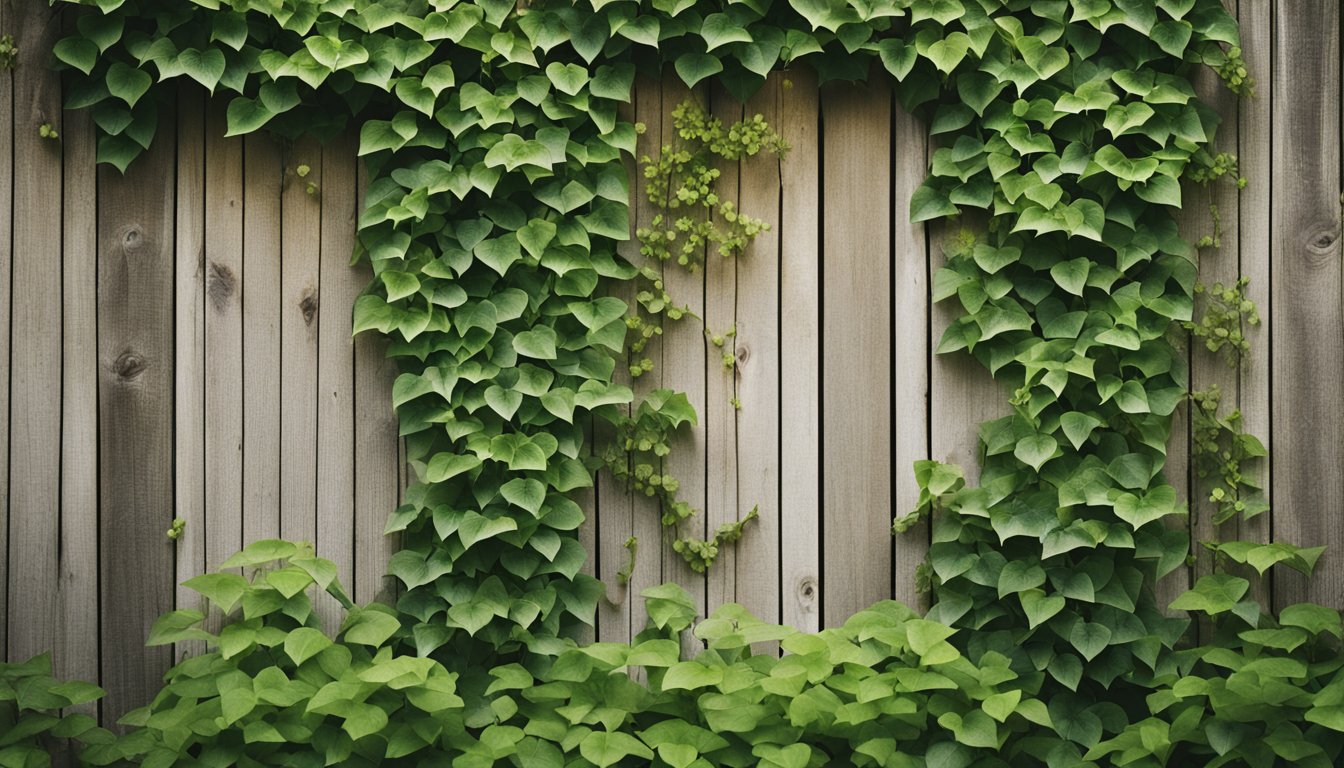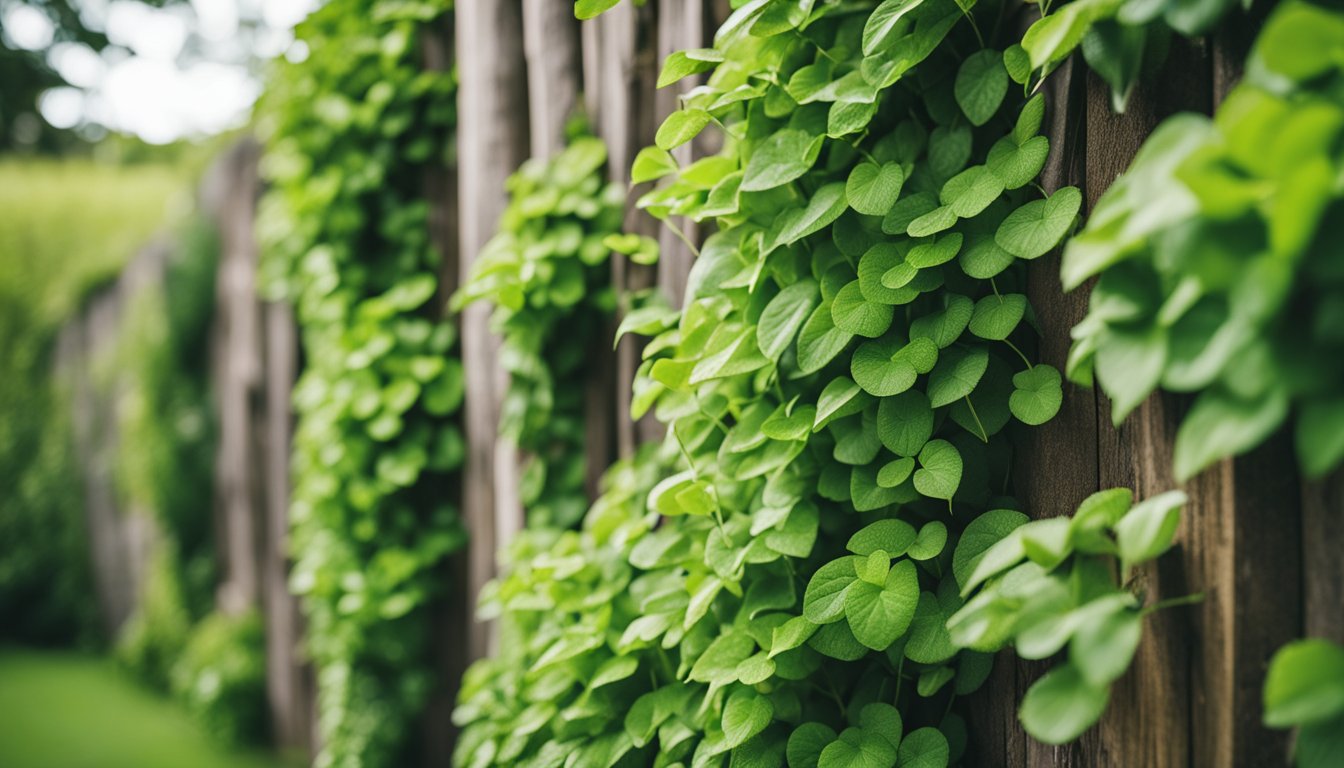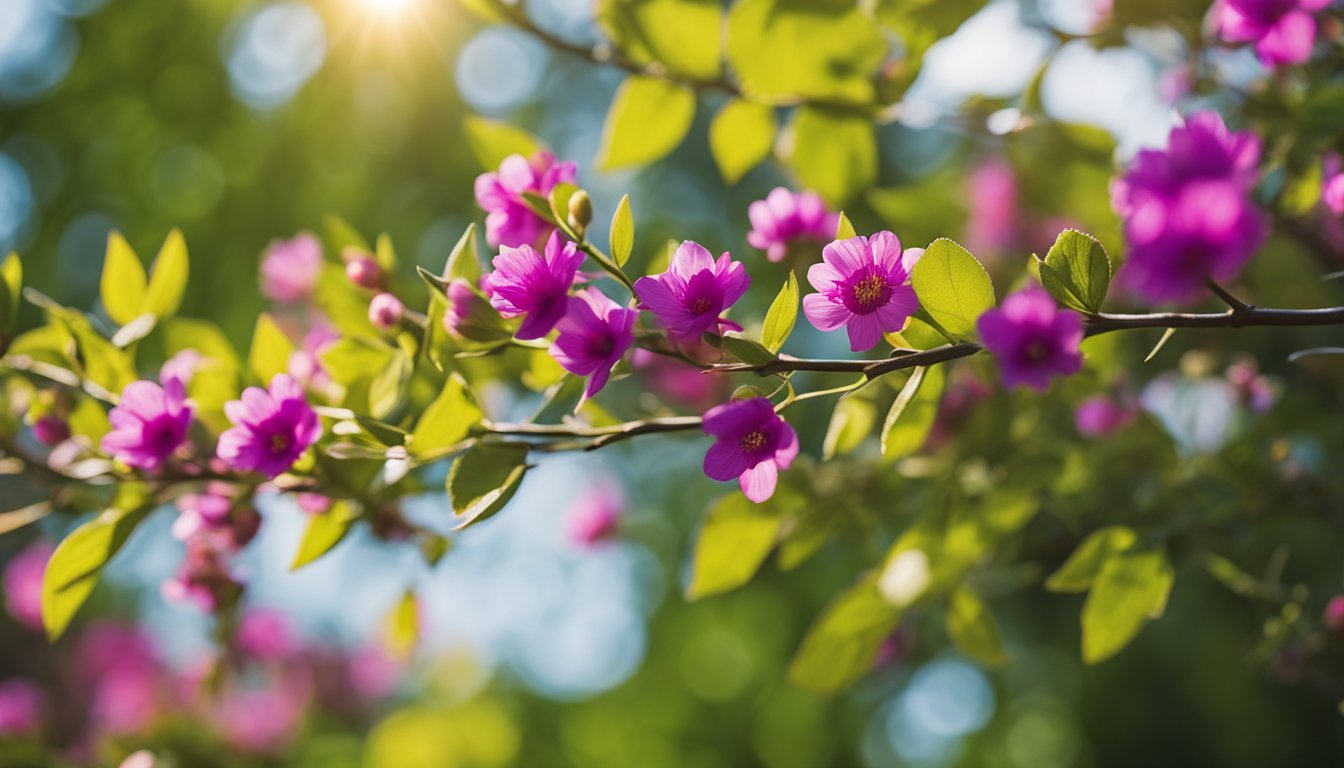Late updated: 07 Aug 2024 10:08
Written by: Emily Thornton
Growing Native UK Climbers For Fences And Walls: Tips for a Flourishing Garden
Growing native UK climbers for fences and walls is a rewarding way to bring life to otherwise dull structures. These plants not only beautify with their lush foliage and vibrant flowers, but they also provide habitats for local wildlife, adding ecological value to your garden. Choosing the right climbers can transform your outdoor space into a vibrant, living tapestry.

One of the foremost benefits of native climbers is their adaptability to local conditions, which means they require less maintenance compared to exotic species. Plants like Dog Rose (Rosa canina) and Old Man’s Beard (Clematis vitalba) are excellent choices for our gardens, offering both aesthetic appeal and wildlife-friendly features. Their ability to create privacy and mask unsightly features makes native climbers particularly valuable in urban and suburban gardens.
Establishing these climbers involves correct planting techniques and proper care. For instance, angling your plants towards the wall or fence and using supports like bamboo canes can help them thrive. Regular prunings, especially in the early years, will encourage healthy growth and ensure they cover the intended area effectively. By following these simple steps, we can turn our walls and fences into striking green features.
Key Takeaways
- Native UK climbers enhance garden aesthetics and support wildlife.
- Proper establishment and care are vital for robust growth.
- Choosing climbers suited to local conditions reduces maintenance.
Choosing the Right Climbers for Your Garden
Selecting the appropriate climbers for your garden requires thoughtful consideration of their types, compatibility with your walls or fences, and specific growing conditions to ensure their health and vitality.
Understanding Different Climber Types
Climbers are often categorised by their methods of attachment. Self-clinging types, like ivy (Hedera helix), use aerial roots to adhere directly to surfaces. These are low-maintenance and excellent for covering large areas.
On the other hand, climbers with twining stems or tendrils, such as clematis and wisteria, require support structures like trellises or wires. These provide more flexibility in shaping their growth.
The distinction between evergreen and deciduous climbers is important. Evergreen varieties, such as star jasmine (Trachelospermum jasminoides), provide year-round foliage, while deciduous plants like some honeysuckles drop their leaves in autumn.
Considerations for Matching Climbers to Fences and Walls
Assess the amount of sunlight your wall or fence receives daily. For example, wisteria thrives in sunny spots, while ivy and some climbing roses can tolerate shade.
Soil type and moisture levels matter too. Ensure the soil is well-draining yet retains sufficient moisture for the plants' needs. Rain shadows, areas protected from rain by overhangs or nearby structures, may require additional watering.
Space constraints dictate whether a vigorous, sprawling climber like pyracantha or a more compact option like sollya heterophylla is suitable. Also consider maintenance requirements—some climbers need regular pruning to maintain their shape and encourage flowering.
Top Climbing Plants for UK Gardens
- Clematis: Available in numerous species and hybrids, clematis are known for their stunning, varied flowers. They require support and regular pruning.
- Ivy (Hedera helix): A versatile, self-clinging evergreen, ivy provides dense coverage and is excellent for wildlife.
- Wisteria: Known for its stunning cascades of flowers, wisteria needs full sun and strong support because of its vigorous growth.
- Honeysuckle: Both evergreen and deciduous varieties exist, offering sweetly-scented blossoms that attract pollinators.
- Climbing Rose: Offers beautiful, fragrant blooms. Requires support and regular pruning.
- Pyracantha: An evergreen option that provides white flowers and colourful berries, adding visual interest year-round.
- Star Jasmine (Trachelospermum jasminoides): Appreciated for its fragrant, star-shaped flowers and glossy evergreen leaves.
Selecting the right climber ensures a flourishing, vibrant display in your garden, tailored to your specific conditions and aesthetic desires.
Establishing and Caring for Your Climbers

Successful cultivation of native UK climbers on fences and walls involves proper planting, regular seasonal maintenance, and steps to enhance plant health and aesthetics. Each of these areas requires specific techniques and care to ensure vigorous, healthy growth and attractive displays.
Planting and Initial Support Systems
When planting climbers, it’s essential to position them correctly. They should be planted 30-50 cm away from the base of the wall or fence to allow roots to spread and avoid competition with the structure's foundation.
Using initial support systems such as bamboo canes, trellises, or obelisks can help guide young plants towards their permanent supports.
Once established, climbers like ivy or honeysuckle will naturally anchor themselves using tendrils, twining stems, or adhesive pads.
Shelter is crucial, especially for less hardy plants. Positioning them in a spot protected from harsh winds will boost their chances of thriving.
Proper watering during the initial stages is vital to establish strong root systems.
Seasonal Maintenance: Pruning and Training
Regular pruning and training are key to maintaining climbers' health and appearance. Pruning should be timed to follow the climbing plant's flowering season. For instance, pruning clematis can vary between spring and autumn, based on their flowering group.
Training the climbers involves guiding the new growth along the desired supports. This can include tying stems to trellises or weaving through pergolas.
Keeping climbers in check ensures they don't become too vigorous or overshadow other plants. This also helps in encouraging more blooms and maintaining a neat structure.
Removing dead or diseased foliage is crucial to preventing decay and promoting healthy growth.
Boosting Plant Health and Aesthetics
To enhance the visual appeal and well-being of climbers, deadheading spent flowers can stimulate further blooming. Additionally, feeding plants with a balanced fertiliser supports robust growth and flowering.
Evergreen varieties, like Solanum laxum, offer year-round foliage but may need extra care in winter, such as mulching for insulation.
Regular watering, especially during dry spells, is critical to keeping plants healthy. This is particularly important for young plants establishing good root systems.
Many climbers, including jasmine and honeysuckle, offer fragrant flowers and nectar, attracting beneficial wildlife like bees and birds, which further enriches the garden ecosystem.
Encouraging a mix of evergreen and deciduous climbers can provide continuous interest and support a variety of wildlife throughout the year.
Frequently Asked Questions

In gardening, certain native UK climbers are better suited for different types of structures and growing conditions. We'll address some common inquiries about selecting and maintaining these plants for optimal growth and coverage.
Which native UK climbers are suitable for growing against walls?
Some of the best native climbers for walls include honeysuckle (Lonicera periclymenum) and ivy (Hedera helix). Honeysuckle, with its fragrant flowers, thrives against walls in sunny to partially shaded spots, while ivy offers dense greenery and grows well in various conditions.
What are the most rapid-growing climbers for pergolas in the UK?
For rapid growth, we recommend clematis vitalba and Rosa canina. Clematis vitalba, a native clematis, produces attractive white flowers and fluffy seedheads. Rosa canina, or dog rose, adds vibrant pink flowers and grows quickly, making it ideal for pergolas.
Can you recommend any evergreen climbers that thrive in shaded areas?
Yes, Ivy (Hedera helix) is a top choice. It maintains its leaves year-round and grows vigorously even in shaded locations. Additionally, Pyracantha can also be a good option, offering evergreen foliage along with clusters of berries in the autumn.
What climbers are best to plant in pots for quick coverage and growth?
Clematis montana and honeysuckle (Lonicera) are excellent for pots. Clematis montana is known for its rapid growth and profuse flowers, while honeysuckle adapts well to containers and provides lovely blooms and fragrance.
Which climbers should I consider for fast and effective fencing coverage?
For quick coverage on fences, wild jasmine (Jasminum officinale) and hop (Humulus lupulus) are reliable options. Wild jasmine offers delicate white flowers and a pleasant scent. Hop provides lush green foliage and grows rapidly, ensuring effective coverage.
Among the fast-growing vines, which are known for their hardiness in the UK climate?
Ivy (Hedera helix) and honeysuckle (Lonicera periclymenum) stand out for their hardiness. Ivy is robust and adaptable, growing well in various soils and climates. Honeysuckle also shows resilience and can withstand the UK's unpredictable weather conditions.
